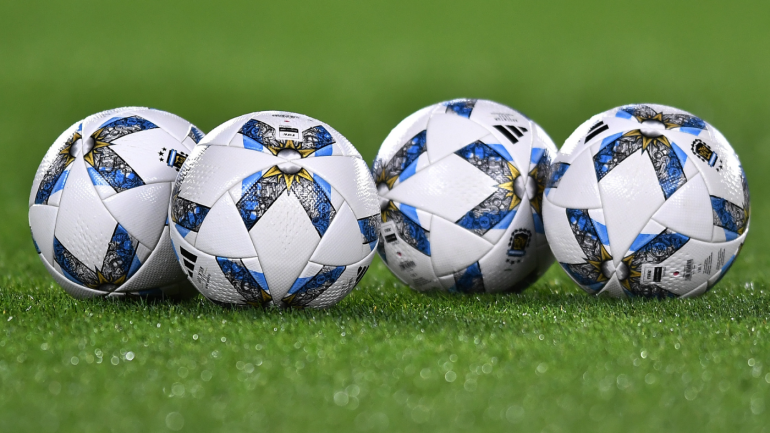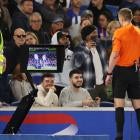
FIFPRO, the global union for soccer players, launched Project ACL on Tuesday, a three-year study that will examine the factors that lead to ACL injuries in women's soccer and aims to provide the data that will help reduce them.
The union is working in conjunction with England's Professional Footballers Association, Leeds Beckett University and Nike to fund Project ACL, which will begin by focusing on the approximately 300 players in England's Women's Super League. Those players have arguably led the discourse in recent years after several high profile players, including Arsenal's Leah Williamson and Chelsea's Mia Fishel, ruptured their ACLs and the project is in direct response to their requests.

Golazo Starting XI Newsletter
Get your Soccer Fix from Around the Globe
Your ultimate guide to the Beautiful Game as our experts take you beyond the pitch and around the globe with news that matters.
Thanks for signing up!
Keep an eye on your inbox.
Sorry!
There was an error processing your subscription.
Project ACL will examine existing research as well as work alongside WSL clubs to collect data around the environments players compete in to assess factors that could increase player risk to ACL tears. FIFPRO reached out to all 12 WSL teams last week and has heard back from over half of them, and hopes to include each of them in the project.
The union cites research that indicates that women's soccer players are two to six times more likely to injure their ACLs than their counterparts in the men's game, a figure that has not gone down despite the increasing professionalization of women's soccer. That figure is the hook of FIFPRO's research, which will do a deep dive into the external factors that the WSL players deal with on a regular basis.
"The big rocks for us are the holistic risk factors, things like workload but also other risk factors in terms of the environment in which players play in, multidisciplinary teams that's around the players, the training load," Dr. Alex Colvin, FIFPRO's head of strategy and research for women's football said. Other things like travel and athletic development at the youth level will also be taken into consideration.
"From a young age, we know girls receive less strength and conditioning exposure and training environments are very different for boys and girls," Dr. Stacey Emmonds, a reader in sports performance at Leeds Beckett University, said. "That builds the foundation for good movement quality, athletic development and strength which underpin reducing some of the injury risk."
One thing that is not going to be part of Project ACL, though, are suggestions that physiological differences between men and women are to blame. The researches will not be collecting any physiological data on the players, and both Colvin and Emmonds believe that research that suggests such a phenomenon is not concrete enough to dispel concerns around external factors.
"A lot of the research continues to suggest and uses the language which suggests that a lot of the risk factors are actually inherent to female athletes when we know a lot of those are potentially modifiable, given the environment that the players are in," Emmonds said. "Within the research to date, there's limited understanding of those environments and really looking at what we can modify is really the main focus, is to understand the context of the game better and really be able to explore how we can influence some of those risk factors."
Want more coverage of women's soccer? Listen below and make sure to watch Attacking Third on Golazo Network Monday and Friday for all your USWNT, NWSL and WSL women's soccer coverage.
Emmonds also pointed to the fact that the lack of research done in women's sports means Project ACL's aim to study external factors could be the one of the first of its kind.
"We know that female athletes are underrepresented generally across sports science and medical literature, so around 6% of literature is only really focused on the female athlete. There's been various calls across recent years to improve that," Emmonds said. "We also know then, due to that, some of the studies that have been done potentially lack power, so they're in very small samples or they're what we call low quality evidence based on some of the methodology. We know there are potentially some contributing factors regarding female physiology but we know there are a lot more things that could be influenced from environmental factors that female athletes find them in."
While England is the focus for now, FIFPRO hopes to scale up the project once they have collected some concrete data. The U.S.-based NWSL could be an area of focus down the road, since Colvin recognizes "that ACL injury occurs not just in England" -- NJ/NY Gotham FC's Midge Purce, for example, tore her ACL last month. Expanding Project ACL to other likes like the NWSL could also give FIFPRO more data to analyze considering the differences between that league and the WSL.
"It's something we've already starting to think about and talk about, the different variables that we'd encounter -- whether it's a summer or a winter league, for example, different climate factors that you have to take into consideration," Colvin said. "For sure, if you think about somewhere like the NWSL, the turf's very different, the travel's very different. The actual context of the game is very different -- there's much more turnover, the game's quicker, so there's more change in direction, for example, so I think if we were to expand the project, we couldn't just take like for like."
Colvin recognizes that FIFPRO will face some roadblocks in taking a global approach, chiefly that they estimate that there are only eight to 10 fully professional women's soccer leagues and that the highest levels of the game are the subject of the study. The researchers, though, aim to measure success by changing the way people perceive ACL injuries -- as well as reducing the number of them in the long-term.
"There's a lot of singular understanding of ACL injuries, a lot of it is very reductionist in terms of how we understand female physiology," Colvin said. "Sometimes it's like, 'There's another player that's done an ACL. We just have to get on with it,' and I think for us, we want to shift that narrative and move away from that and better understand the professional women's game."





















